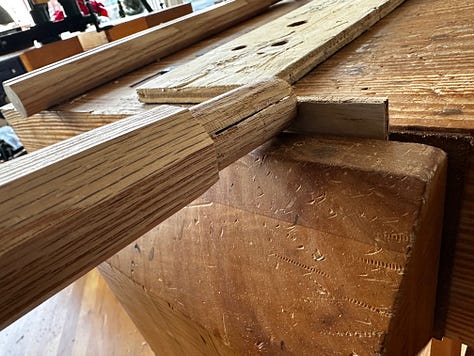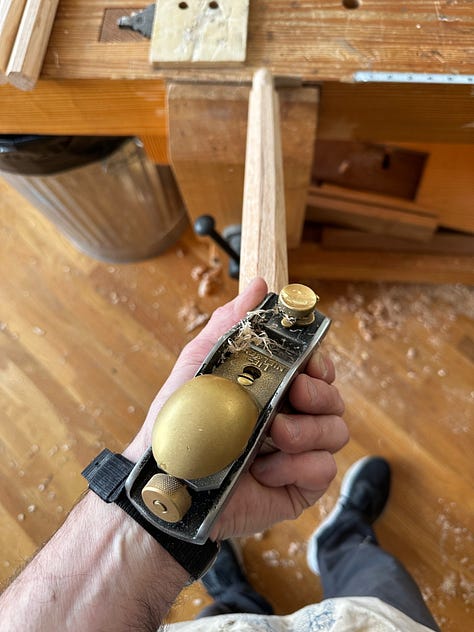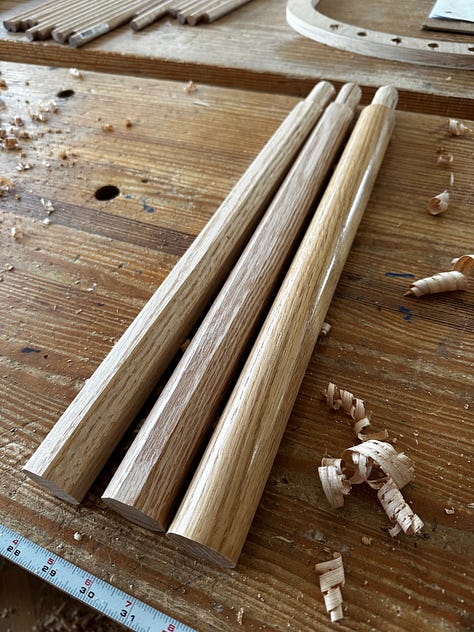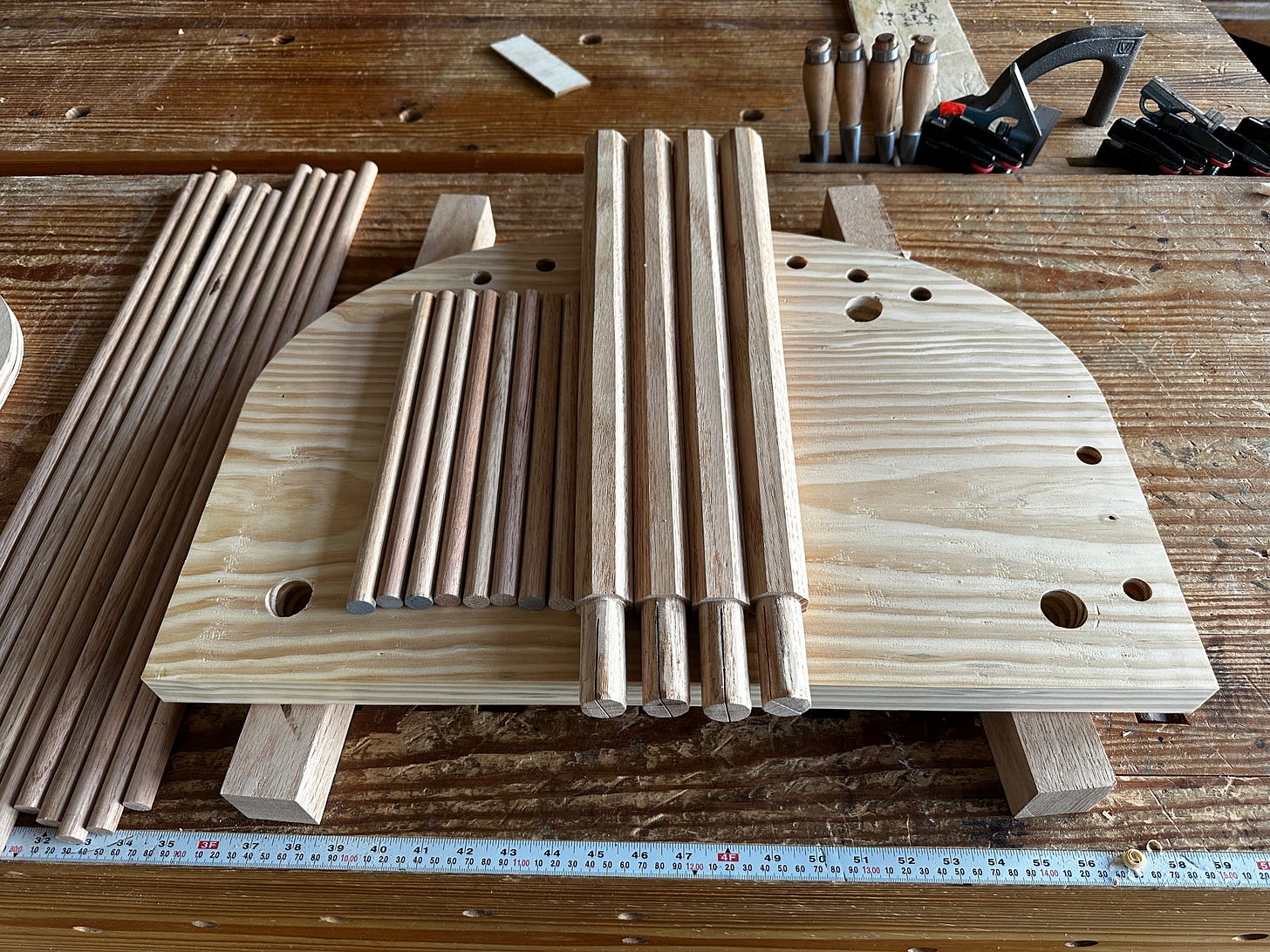This week I’m building a chair in slow motion for “Build a Chair from Bulls&%t.” And I do mean slow. Today, all I was able to accomplish at the bench was tenoning and octagonalizing the legs.
The reason it’s going slowly is that I’m writing this book in a way that’s different from my earlier books.
With those books, I would first build a project (while taking photos and notes), then immediately write up the chapter that documents the construction process. While that seems logical, I’ve long suspected it’s backward. Why? After I build a project, I’m usually wiped out in the head and body, so that’s a bad time to write. Why? It’s easy to get lazy (“OK…build the highboy’s face frames, doors and drawers. Apply your favorite finish, and beer. Fin”).
In the early 2000s, I suggested to my fellow editors at Popular Woodworking Magazine that we might try a different approach. But my idea was booed out of the meeting. Strangled in its sleep. Bud nipped.
Here’s the process. Before you begin building, write the chapter as if you have already built the thing. Your brain is already popping with ideas about how to solve this problem or that problem. Writing it out beforehand helps you plan.
Then print out the chapter and keep it in a clipboard on your bench. As you build the project, edit and append the chapter with how things *really* need to be built. Note the operations that were unexpectedly tricky (they will be tricky for the reader). Compare your chapter to reality at every step. When questions occur to you (such as, how tight should this odd joint be?) note them in the chapter. Most readers will have the same question.



When the project is finished, edit the chapter so it reflects what really happened.
That is what I have been doing every day for the last few weeks. I was surprised how much better my finished chapters are when I work this way. I thought it would be a slower process, but it takes about the same amount of time.
Other Odd Things About ‘Build a Chair from …’
This will be one of our pocket books, 4" x 6-1/2", hardbound on nice paper and inexpensive, about $23. Like most of my other books, the pdf version will be free to everyone on the day we launch the book. Plus, the full-size pdf patterns for the chair(s) will be a free download for everyone on the day we launch. We might sell printed versions of the plans.
Giving the book and plans away for free will, I hope, encourage younger woodworkers to give this a try.
The other unusual detail about the book is that there will be no step photos. All the instruction will be in comic-book-like panels with black-and-white line drawings (done by a professional artist – more on that person later). The only photos in the book will be of the finished chair(s) and stool, and perhaps the finishing process.
There will still be written descriptions of the building process, but they will be brief. I’m about halfway through writing the text, and I have about 8,000 words (a typical book has 100,000 words). I want people to be able to read this book in an afternoon. And I want the illustrations to provide enough information to build the chair.
Oh, and because of the “bulls&%t” in the title, the cover cloth will be brown.
I also hope we can do a letterpress poster of all the steps to build the BS chair, so you can go that way if you are a poster-based organism.1 And yeah, we’ll probably do a video, too.
The Fun Part
I enjoy working with limitations on the materials and tools. It forces me to be creative. Today, I made the cylindrical 1"-diameter x 2-1/4"-long tenons on the band saw using a trick I read in an old book from the 1970s.
Keep reading with a 7-day free trial
Subscribe to The American Peasant to keep reading this post and get 7 days of free access to the full post archives.


